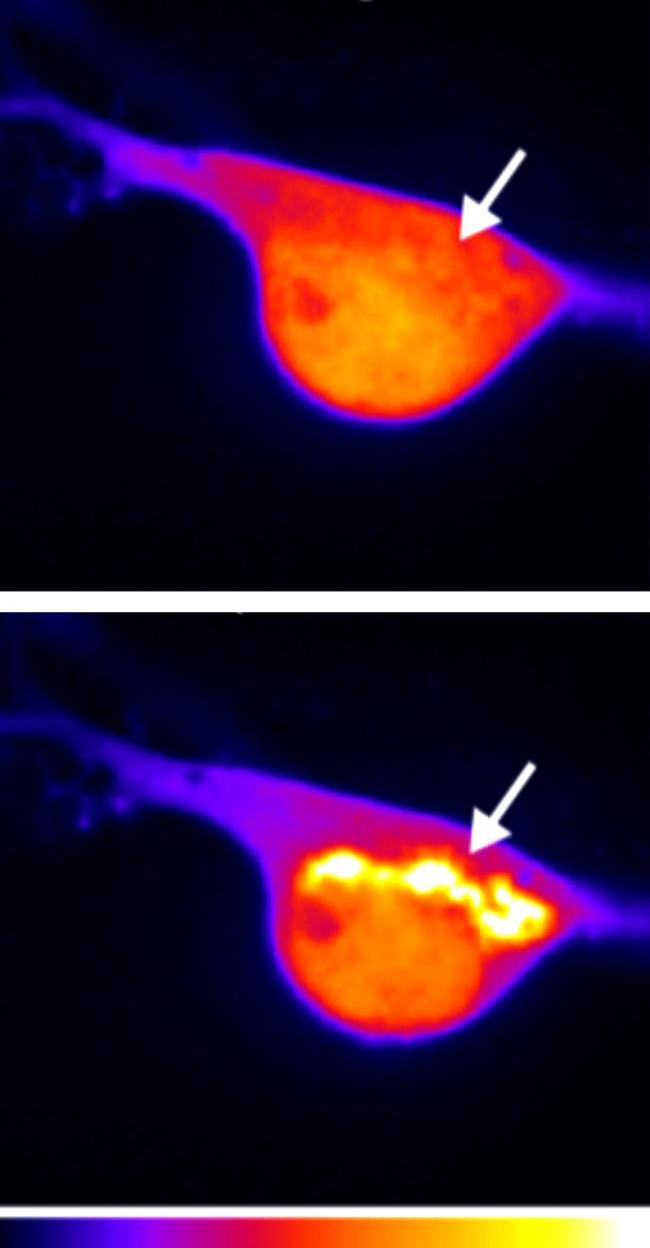How opioid drugs activate receptors
May 22, 2018
How opioid drugs activate receptors
At a Glance
- Researchers found that opioid drugs and the brain’s natural opioids differ in how they activate receptors in nerve cells.
- This difference may help researchers develop better treatments that are less addictive than currently available opioid drugs.

Opioid pain relievers, such as morphine and oxycodone, are generally safe when used for a short time and as prescribed by a doctor. But some people misuse opioid drugs for their euphoric effects. When misused, these drugs can lead to addiction, overdose, and death. In 2016, there were an estimated 42,000 opioid-related overdose deaths in the United States.
Opioids work by activating opioid receptors on nerve cells. These receptors belong to a family of proteins known as G protein-coupled receptors (GPCRs). Scientists have always assumed that all opioids—whether produced by the body (endogenously) or taken as a drug—interact in the same way with opioid receptors.
Recent studies have found GPCRs that can be activated within the cell as well as at the cell surface. A research team led by Dr. Mark von Zastrow of the University of California, San Francisco, set out to test whether all opioids—whether endogenous or not—bind to the same receptors in nerve cells. The research, which was supported in part by NIH’s National Institute on Drug Abuse (NIDA), was published online in Neuron on May 5, 2018.
The team designed a tiny sensor, called a nanobody, that generates a fluorescent signal when an opioid receptor is activated. The scientists used the nanobody to detect endogenous opioid-activating receptors on the surface of a nerve cell. They found that activation by the endogenous opioid wasn’t restricted to the cell surface. Receptor molecules entered the cell inside what is known as an endosome. There, they remained activated for several minutes.
In addition to activating receptors on the nerve cell surface and in endosomes, opioid drugs had a different wave of activity. Within tens of seconds, they induced nanobody signaling in receptors in internal structures known as the Golgi apparatus and Golgi outposts. The different and more rapid ways that opioid drugs interact with these receptors may help explain their undesired side effects. These findings could help guide the design of pain relievers that don’t have these unwanted effects.
“We were surprised to see that drugs such as morphine activate opioid receptors in a location at which naturally occurring opioids do not,” von Zastrow says.
“This ground-breaking study has uncovered important distinctions between the opioids that our brain makes naturally and therapeutic opioids that can be misused,” says NIDA Director Dr. Nora D. Volkow. “This information can be mined to better understand the potential adverse actions of medically prescribed opioids and how to manipulate the endogenous system to achieve optimal therapeutic results without the unhealthy side effects of tolerance, dependence, or addiction.”
Related Links
- Up Close With Opioid Receptors
- Designing More Effective Opioids
- Opioid Pain Relievers May Prolong Pain
- Dealing With Drug Problems
- Biology of Addiction
- Opioids


